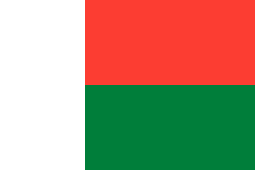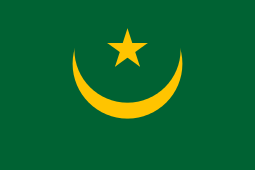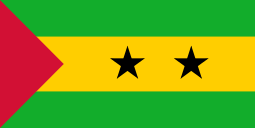Semi-presidential system
 | |||||
| Systems of government | |||||
|---|---|---|---|---|---|
|
| Part of a series on |
| Politics |
|---|
.svg.png) |
|
Academic disciplines |
|
Organs of government |
| Part of the Politics series on |
| Executive government |
|---|
| Head of state |
| Government |
|
| Systems |
| Lists |
| Politics portal |
A semi-presidential system is a system of government in which a president exists alongside a prime minister and a cabinet, with the latter two being responsible to the legislature of a state. It differs from a parliamentary republic in that it has a popularly elected head of state, who is more than a purely ceremonial figurehead, and from the presidential system in that the cabinet, although named by the president, is responsible to the legislature, which may force the cabinet to resign through a motion of no confidence.
While the German Weimar Republic (1919–1933) exemplified an early semi-presidential system, the term "semi-presidential" was introduced by a 1959 article by journalist Hubert Beuve-Méry[1] and popularized by a 1978 work by political scientist Maurice Duverger, both of which intended to describe the French Fifth Republic (established in 1958).[2][3]
Subtypes
There are two separate subtypes of semi-presidentialism: premier-presidentialism and president-parliamentarism.
Under the premier-presidential system, the prime minister and cabinet are exclusively accountable to parliament. The president chooses the prime minister and cabinet, but only the parliament may remove them from office with a vote of no confidence. The president does not have the right to dismiss the prime minister or the cabinet. However, in some cases, the president can circumvent this limitation by exercising the discretionary power of dissolving the assembly, which forces the prime minister and cabinet to step down. This subtype is used in Burkina Faso, France, Georgia (since 2013), Lithuania, Madagascar, Mali, Mongolia, Niger, Poland, Portugal, Romania, Senegal, Sri Lanka and Ukraine (since 2014; previously, between 2006 and 2010).[4][5]
Under the president-parliamentary system, the prime minister and cabinet are dually accountable to the president and the assembly majority. The president chooses the prime minister and the cabinet but must have the support of the parliament majority for his choice. In order to remove a prime minister or the whole cabinet from power, the president can dismiss them or the assembly can remove them by a vote of no confidence. This form of semi-presidentialism is much closer to pure presidentialism. It is used in Armenia, Georgia between 2004 and 2013, Mozambique, Namibia, Russia, Taiwan and Ukraine between 1996 and 2005, and again from 2010 to 2014. It was used in Germany during the Weimarer Republik (Weimar Republic), as the constitutional regime between 1919 and 1933 is called unofficially.[4][5]
Division of powers
The powers that are divided between president and prime minister can vary greatly between countries.
In France, for example, in case of cohabitation when the president and the prime minister come from opposing parties, the president takes care of foreign policy and defence policy (these are generally called les prérogatives présidentielles (the presidential prerogatives)) and the prime minister of domestic policy and economic policy.[6] In this case, the division of responsibilities between the prime minister and the president is not explicitly stated in the constitution, but has evolved as a political convention based on the constitutional principle that the prime minister is appointed (with the subsequent approval of a parliament majority) and dismissed by the president.[7] On the other hand, whenever the president is from the same party as the prime minister who leads the conseil de gouvernement (cabinet), he often (if not usually) exercises de facto control over all fields of policy via the prime minister. It is up to the president to decide, how much "autonomy" he leaves to "his" prime minister to act on his own.
In Finland, by contrast, the assignment of responsibility for foreign policy was explicitly stated in the pre-2000 constitution: "foreign policy is led by the president in cooperation with the cabinet".
Cohabitation
Semi-presidential systems may sometimes experience periods in which the President and the Prime Minister are from differing political parties. This is called "cohabitation", a term which originated in France when the situation first arose in the 1980s. Cohabitation can create an effective system of checks and balances or a period of bitter and tense stonewalling, depending on the attitudes of the two leaders, the ideologies of their parties, or the demands of their constituencies.
In most cases, cohabitation results from a system in which the two executives are not elected at the same time or for the same term. For example, in 1981, France elected both a Socialist president and legislature, which yielded a Socialist premier. But whereas the president's term of office was for seven years, the National Assembly only served for five. When, in the 1986 legislative election, the French people elected a right-of-centre Assembly, Socialist President Mitterrand was forced into cohabitation with rightist premier Jacques Chirac.
However, in 2000, amendments to the French Constitution reduced the length of the French President's term from seven to five years. This has significantly lowered the chances of cohabitation occurring, as parliamentary and presidential elections may now be conducted within a shorter span of each other.
Republics with a semi-presidential system of government
Italics indicate states with limited recognition.
 Abkhazia
Abkhazia Algeria
Algeria Armenia
Armenia Azerbaijan[8]
Azerbaijan[8] Burkina Faso
Burkina Faso Cape Verde (Cabo Verde)[9]
Cape Verde (Cabo Verde)[9] Democratic Republic of the Congo (Congo-Kinshasa)
Democratic Republic of the Congo (Congo-Kinshasa) East Timor (Timor-Leste)[9]
East Timor (Timor-Leste)[9] Egypt
Egypt France
France Georgia
Georgia Guinea-Bissau[9]
Guinea-Bissau[9] Haiti
Haiti Lithuania
Lithuania  Madagascar
Madagascar Mali
Mali Mauritania
Mauritania Mongolia
Mongolia Mozambique[9]
Mozambique[9] Nagorno-Karabakh
Nagorno-Karabakh Namibia[10]
Namibia[10] Niger
Niger Northern Cyprus
Northern Cyprus Palestine
Palestine Portugal
Portugal Romania
Romania Russia
Russia São Tomé and Príncipe[9]
São Tomé and Príncipe[9] Senegal
Senegal Sri Lanka
Sri Lanka South Ossetia
South Ossetia Syria
Syria Taiwan (Republic of China)
Taiwan (Republic of China) Transnistria
Transnistria Tunisia
Tunisia Ukraine
Ukraine Yemen[11][12]
Yemen[11][12]
See also
- List of countries by system of government
- Parliamentary system
- Presidential system
- Semi-parliamentary system
Notes and references
- ↑ Le Monde, 8 January 1959.
- ↑ Duverger, Maurice (September 1996). "Les monarchies républicaines" [The crowned republics] (PDF). Pouvoirs, revue française d’études constitutionnelles et politiques (in French). No. 78. Paris: Éditions du Seuil. pp. 107–120. ISBN 2-02-030123-7. ISSN 0152-0768. Retrieved 10 September 2016.
- ↑ Bahro, Bayerlein, and Veser, 1998.
- 1 2 Shugart, Matthew Søberg (September 2005). "Semi-Presidential Systems: Dual Executive and Mixed Authority Patterns" (PDF). Graduate School of International Relations and Pacific Studies. United States: University of California, San Diego. Archived from the original (PDF) on 19 August 2008. Retrieved 12 September 2016.
- 1 2 Shugart, Matthew Søberg (December 2005). "Semi-Presidential Systems: Dual Executive And Mixed Authority Patterns" (PDF). French Politics. Palgrave Macmillan Journals. 3 (3): 323–351. doi:10.1057/palgrave.fp.8200087. Retrieved 12 September 2016.
- ↑ See article 5, title II, of the French Constitution of 1958. Jean Massot, Quelle place la Constitution de 1958 accorde-t-elle au Président de la République?, Constitutional Council of France website (in French).
- ↑ Le Petit Larousse 2013 p. 880
- ↑ Article 95, Section 9 of the Constitution of the Republic of Azerbaijan
- 1 2 3 4 5 Neto, Octávio Amorim; Lobo, Marina Costa (2010). "Between Constitutional Diffusion and Local Politics: Semi-Presidentialism in Portuguese-Speaking Countries". Social Science Research Network. Retrieved 29 December 2015.
- ↑ Article 41 of the Constitution of the Republic of Namibia.
- ↑ Article 74 of the Constitution of the Republic of Yemen: "The House of Representatives has the right to withdraw confidence from the Government. Withdrawal of confidence may be requested only after interpellating the Prime Minister or his representative. A request for withdrawing confidence has to be signed by a third of the members of the House and the House may not decide on this request before the elapsing of at least seven days after its submission. Withdrawal of confidence in the Government has to be decided by the majority of members of the House."
- ↑ Article 105 of the Constitution of the Republic of Yemen: "The Prime Minister and ministers are collectively responsible before the Presidential Council and the House of Representatives for the work of the Government."
- Bahro, Horst; Bayerlein, Bernhard H.; Veser, Ernst (October 1998). "Duverger's concept: Semi–presidential government revisited" (PDF). European Journal of Political Research. Wiley. 34 (2): 201–224. doi:10.1111/1475-6765.00405.
- Beuman, Lydia M. Political Institutions in East Timor: Semi-Presidentialism and Democratisation. Abingdon, Oxon: Routledge. ISBN 1317362128. LCCN 2015036590 – via Google Books.
- Canas, Vitalino (2004). "The Semi-Presidential System" (PDF). Zeitschrift für ausländisches öffentliches Recht und Völkerrecht (Heidelberg Journal of International Law). Max-Planck-Institut für ausländisches öffentliches Recht und Völkerrecht. 64 (1): 95–124.
- Duverger, Maurice (1978). Échec au roi. Paris: A. Michel. ISBN 9782226005809.
- Duverger, Maurice (June 1980). "A New Political System Model: Semi-Presidential Government". European Journal of Political Research. Wiley. 8 (2): 165–187. doi:10.1111/j.1475-6765.1980.tb00569.x.
- Elgie, Robert (2011). Semi-Presidentialism: Sub-Types And Democratic Performance. Comparative Politics. (Oxford Scholarship Online Politics) OUP Oxford ISBN 9780199585984
- Frye, Timothy (October 1997). "A Politics of Institutional Choice: Post-Communist Presidencies" (PDF). Comparative Political Studies. Sage. 30 (5): 523–552. doi:10.1177/0010414097030005001.
- Goetz, Klaus H. (2006). Heywood, Paul; Jones, Erik; Rhodes, Martin; Sedelmeier, eds. Developments in European politics (PDF). Power at the Centre: The Organization of Democratic Systems. Basingstoke England New York: Palgrave Macmillan. p. 368. ISBN 9780230000414.
- J. Kristiadi (April 22, 2008). "Indonesia Outlook 2007: Toward strong, democratic governance". The Jakarta Post. PT Bina Media Tenggara. Archived from the original on 21 April 2008. Retrieved 30 June 2008.
- Lijphart, Arend (1992). Parliamentary versus presidential government. Oxford New York: Oxford University Press. ISBN 9780198780441.
- Nousiainen, Jaakko (June 2001). "From Semi-presidentialism to Parliamentary Government: Political and Constitutional Developments in Finland". Scandinavian Political Studies. Wiley. 24 (2): 95–109. doi:10.1111/1467-9477.00048. ISSN 0080-6757.
- Passarelli, Gianluca (2010). "The government in two semi-presidential systems: France and Portugal in a comparative perspective" (PDF). French Politics (2010) 8: 402–428. doi:10.1057/fp.2010.21 Dipartimento di Scienza Politica, University of Bologna.
- Rhodes, R. A. W. (1995). "From Prime Ministerial power to core executive". In Rhodes, R. A. W.; Dunleavy, Patrick. Prime minister, cabinet, and core executive. New York: St. Martin's Press. pp. 11–37. ISBN 9780333555286.
- Roper, Steven D. (April 2002). "Are All Semipresidential Regimes the Same? A Comparison of Premier-Presidential Regimes". Comparative Politics. City University of New York. 34 (3): 253–272. doi:10.2307/4146953. JSTOR 4146953.
- Sartori, Giovanni (1997). Comparative constitutional engineering: an inquiry into structures, incentives, and outcomes (2nd ed.). Washington Square, New York: New York University Press. ISBN 9780333675090.
- Shoesmith, Dennis (March–April 2003). "Timor-Leste: Divided Leadership in a Semi-Presidential System" (PDF). Asian Survey. University of California Press. 43 (2): 231–252. doi:10.1525/as.2003.43.2.231.
- Shugart, Matthew Søberg (September 2005). Semi-Presidential Systems: Dual Executive and Mixed Authority Patterns. Graduate School of International Relations and Pacific Studies, University of California, San Diego.
- Shugart, Matthew Søberg (December 2005). "Semi-Presidential Systems: Dual Executive and Mixed Authority Patterns" (PDF). French Politics. Palgrave Macmillan. 3 (3): 323–351. doi:10.1057/palgrave.fp.8200087.
- Shugart, Matthew Søberg; Carey, John M. (1992). Presidents and assemblies: constitutional design and electoral dynamics. Cambridge England New York: Cambridge University Press. ISBN 9780521429900.
- Veser, Ernst (1997). "Semi-Presidentialism-Duverger's concept: A New Political System Model" (PDF). Journal for Humanities and Social Sciences. Research Center for Humanities and Social Sciences, Taiwan. 11 (1): 39–60.
External links
- Governing Systems and Executive-Legislative Relations. (Presidential, Parliamentary and Hybrid Systems), United Nations Development Programme (n.d.). Archived 10 February 2010 at the Wayback Machine..
- The Semi-Presidential One, blog of Robert Elgie
- Presidential Power blog with posts written by several political scientists, including Robert Elgie.